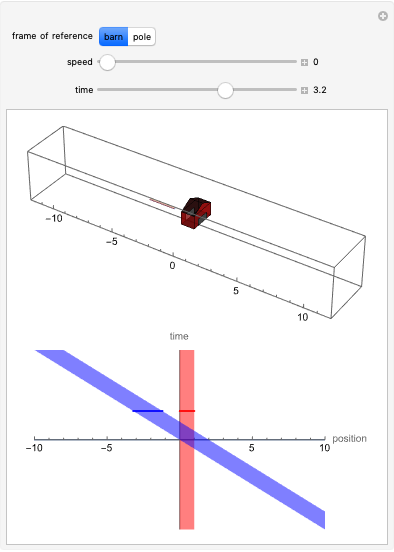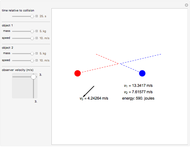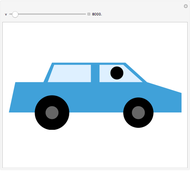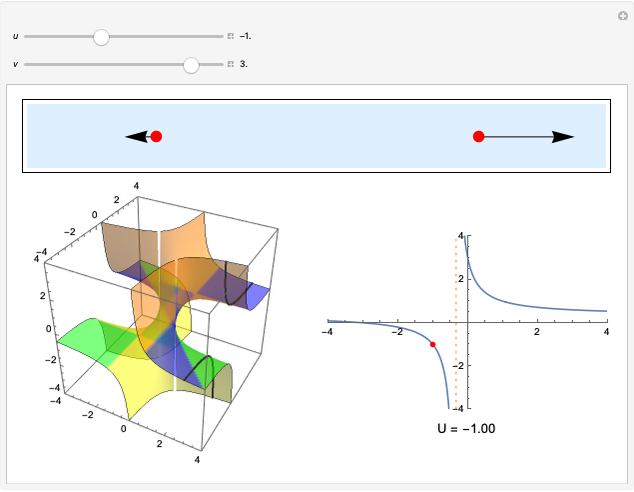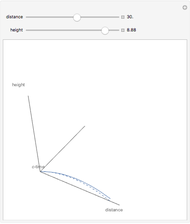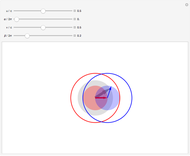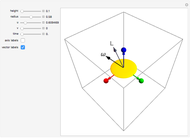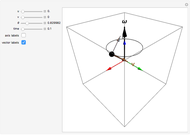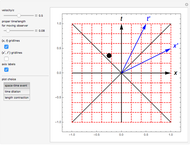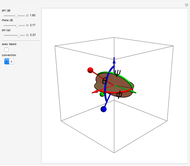Understanding Special Relativity: The Lorentz Transformation, Time Dilation, and Length Contraction

Requires a Wolfram Notebook System
Interact on desktop, mobile and cloud with the free Wolfram Player or other Wolfram Language products.
The Lorentz transformation describes how two observers in relative motion can relate their measurements of space and time. This Demonstration illustrates the space and time axes for two observers, one at rest (black axes, red gridlines) and one in motion (blue axes and gridlines) for a single space-time event, time dilation, or length contraction. The coordinate axes can be shown for each observer, and the relative velocity can be changed at will.
[more]
Contributed by: Frederick W. Strauch (August 2011)
Open content licensed under CC BY-NC-SA
Snapshots
Details
The Lorentz transformation between two reference frames with coordinates  and
and  , in relative motion with velocity
, in relative motion with velocity  , can be represented by
, can be represented by  , or the inverse
, or the inverse  , where
, where  and
and  . The inverse transformation is used to plot gridlines of constant
. The inverse transformation is used to plot gridlines of constant  and
and  .
.
See also:
http://en.wikipedia.org/wiki/Lorentz_transformation
http://en.wikipedia.org/wiki/Time_dilation
http://en.wikipedia.org/wiki/Length_contraction
Permanent Citation








